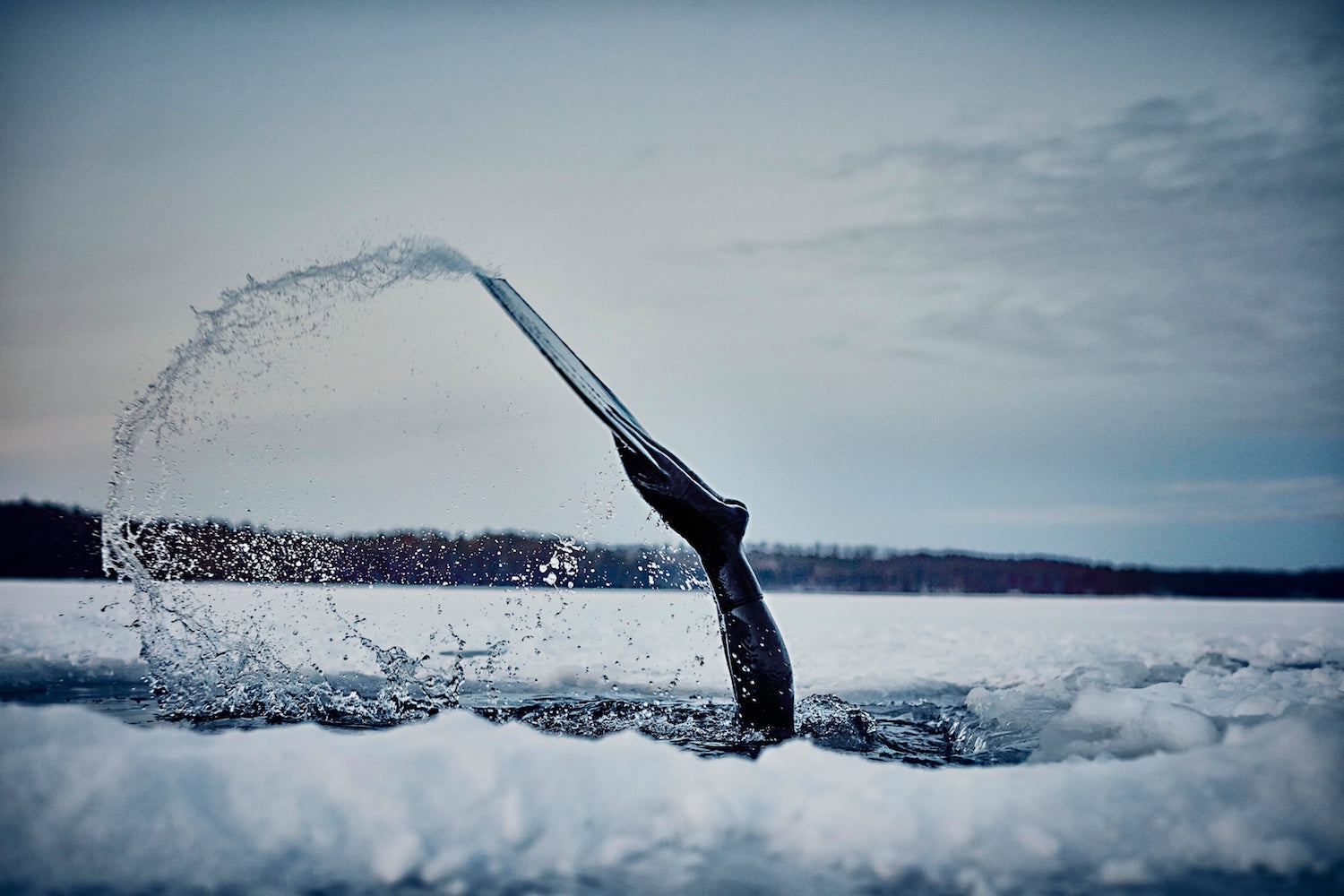
What is the first question that someone asks themselves when they look at your photographs?
Have you ever thought about it? While many of us seem to think that we need to improve a skill, buy a new piece of gear, or travel to more exotic destinations … the truth is, we need to start asking ourselves better questions.
When I ask students what questions they are asking themselves, it often leaves them scratching their heads. We get so focused on what we are doing that we forget how photographs work. Every photograph is completed by the viewer. It is the “looking” that is the last step in the photographic process, not the printing or posting.
In order to get inside of the viewing experience, we need to step into the shoes of someone else. This small, but important, step allows us to understand where we have gone off track and gives us a map for returning to the world.
Today we will look at a short video about a woman who free dives under ice so that we can see how answering a few key questions can mean the difference between masterful engagement and confused boredom.
Here are a list of questions that you can think about when you watch the video:
• Who is the main character?
• Where does it take place?
• What is the weather like?
• What does it feel like?
• Why is this important to Johanna?
• Why should it be important to us?
• What does it deliver that we did not already know about the subject?
Give the video another watch and then read the answers below. They will allow you to frame your projects with greater clarity by asking better questions … and confirming that you included all of the important parts.
“A good storyteller does not cry when they tell a story, they get you to cry as you listen. That is when you know there is a connection.”
Who is the main character?
All we know is that Johanna (Nordblad) is a free diver, meaning she swims underwater for extended periods of time, with only her breath. After some additional research it turns out she is a Norwegian-born free-diving record holder. This is not included in the video because, in truth, it is not so important to the film. Her level of competence comes through without all the facts and lets the experience of going under the ice remain as the focus.
Where does it take place?
The Arctic … and if you did not catch that in the caption, you can tell it is somewhere with a lot of snow.
What is the weather like?
It is cold, with a lot of snow and, judging by the lack of footprints, it looks like the place has been like this for a while. Ernest Hemingway warned writers to “get the f-ing weather in your story.” In Hemingway’s melodramatic fashion, he gives a useful and often overlooked piece of advice.
What does it feel like?
The snow crunches under her feet, usually a clear sign of very cold snow. Even if you are from an equatorial country, you may have read about the sound of very cold snow.
Why is this important to Johanna?
She had some accident that broke her leg very badly. We never learn what exactly happened, other than they needed to leave the bone exposed for ten days to avoid necrosis.
Her drive to experiment with cold water therapy was part of her recovery process. We never learn what the injury was, just that it was severe. When we can allow a viewer to tap into our driving force, it connects them in a way that facts and figures will never do. We are human, and we respond to intense experiences.
Why should it be important to us?
A classic art school mistake is the idea that just because something happened to you, it is important. As I heard it best explained, “A good storyteller does not cry when they tell a story, they get you to cry as you listen. That is when you know there is a connection.”
What does it deliver that we did not already know about the subject?
This is often the toughest question for photographers to tackle. We know about the cold. We might know about free-diving, heck we might even know a bit about breath holding. But the curious thing about this video is that the combination of all three, plus what most people would consider the terrifying conditions or the fear of being trapped under the ice is peaceful for Johanna. Her enjoyment of these conditions that would make the hair on most people’s necks stand on end is unexpected.
She successfully undermines the “tough guy” persona that is associated with extreme feats and does it calmly and, dare I say, with a delightful elegance. While this might not get you out into the next snowstorm and swimming under ice, it does allow a momentary excursion into a world of peace, silence, and frigid clarity that is memorable.
Feel free to use the list of questions above for your next project. It will serve as a helpful guide to keep you on track. And when you are not using it yourself, it can be an excellent way to discuss a friend’s work with them in a constructive manner.